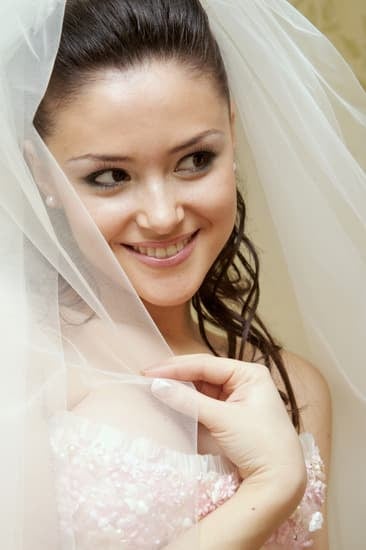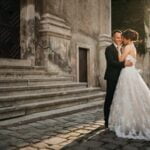A Catholic wedding is a sacred and meaningful celebration that incorporates various rituals and traditions, including the reading of passages from the Bible. These readings hold great significance in the context of a Catholic wedding, as they serve to impart wisdom, convey blessings, and symbolize the spiritual foundation of the union. For many couples, selecting and incorporating readings into their wedding ceremony is a deeply personal and important aspect of their nuptials.
The history of readings in Catholic weddings dates back centuries, with roots in ancient religious practices and traditions. Understanding the origins and significance of these readings provides insight into their role in modern-day ceremonies. Additionally, exploring the different types of readings commonly included in a Catholic wedding sheds light on the variety and depth of meaning that these passages can bring to the occasion.
One common question that arises when planning a Catholic wedding is: how many readings are included in the ceremony? To answer this specific query, it is essential to delve into the details of what readings are typically included and how they contribute to the overall experience of a Catholic wedding.
In this article, we will explore the history, types, selection process, and impact of readings in a Catholic wedding ceremony to provide couples with valuable insight as they plan their special day.
The History of Readings in Catholic Weddings
The institution of marriage has deep roots in the Catholic faith, and the inclusion of readings in the wedding ceremony is a tradition that dates back centuries. Understanding the history of readings in Catholic weddings provides insight into the significance and symbolic meaning behind this element of the ceremony.
Origins of Readings in Catholic Weddings
The tradition of including readings in Catholic weddings can be traced back to the early Christian Church. In ancient times, couples would gather with their community to exchange vows and seek blessings for their union. During these gatherings, various passages from Scripture were read aloud to provide guidance, inspiration, and encouragement for the couple as they embarked on their married life together.
The Role of Tradition
Over time, this practice evolved into a formalized part of the wedding ceremony within the Catholic Church. Today, the inclusion of readings is seen as an essential component of a Catholic wedding, serving to not only provide spiritual wisdom but also to uphold and honor the traditions passed down through generations.
Understanding this historical context sheds light on why readings are such a central part of Catholic weddings today. As couples prepare for their special day, they can take comfort in knowing that they are participating in a ritual that has connected countless couples throughout history and continues to hold deep meaning within the Church.
Types of Readings
In a Catholic wedding ceremony, readings play a significant role in conveying the spiritual and moral significance of marriage. These readings are carefully chosen to reflect the couple’s commitment to each other and their faith, as well as to impart wisdom and guidance to the couple as they begin their married life together. The types of readings included in a Catholic wedding ceremony are diverse and purposeful, each serving a specific function in the context of the nuptials.
There are typically three readings included in a Catholic wedding ceremony:
- The First Reading: This reading is usually taken from the Old Testament and serves as a reflection on God’s covenant with his people. It highlights themes of love, fidelity, and commitment, mirroring the vows exchanged by the couple.
- The Responsorial Psalm: This is a musical or sung response that follows the first reading. It is often reflective or meditative in nature, emphasizing praise, gratitude, and trust in God’s guidance.
- The Second Reading: Taken from the New Testament, this reading often focuses on love, unity, and selflessness. It emphasizes the importance of these virtues in marriage and serves as a source of inspiration for the couple.
The inclusion of these three distinct readings allows for a rich tapestry of biblical teachings and moral lessons to be woven into the fabric of the wedding ceremony. Each reading contributes its unique message and symbolism to enhance the spiritual experience for both the couple exchanging vows and their guests witnessing this sacred union.
In addition to these traditional readings, couples may also choose to include additional non-biblical readings that hold personal significance for them. This could be poetry, excerpts from literature or philosophy, or even writings from influential figures that resonate with their beliefs about love and marriage. Ultimately, these readings serve to deepen the emotional connection between the couple and underscore the profound significance of their commitment before God and their community.
How Many Readings Are in a Catholic Wedding
In a Catholic wedding, the readings hold a significant role in the ceremony. They serve as a way to convey important messages and blessings to the couple, as well as to all those present at the wedding.
The readings are carefully chosen to reflect the values and principles of the Catholic faith, while also resonating with the couple getting married. Understanding how many readings are typically included in a Catholic wedding can help couples and their families plan for this important aspect of the ceremony.
Number of Readings
In a standard Catholic wedding ceremony, there are typically three readings that are included. These readings are chosen from the Old Testament, New Testament, and one from the Gospels. Each reading serves a specific purpose and carries its own unique message that adds depth and meaning to the overall ceremony.
The Significance of Three Readings
The inclusion of three readings in a Catholic wedding holds symbolic significance related to the Holy Trinity – the Father, Son, and Holy Spirit. This aspect reinforces the spiritual connection between marriage and God’s presence in it. Additionally, these readings offer diverse perspectives on love, commitment, and faith, contributing to a rich tapestry of wisdom that supports and inspires the couple as they begin their married life together.
Variations in Readings
While three readings are customary in a Catholic wedding ceremony, there may be variations based on individual preferences or cultural traditions. Some couples may choose additional readings or include personalized selections that hold special meaning for them. Furthermore, certain dioceses or parishes may have specific guidelines regarding readings, so it’s important for couples to consult with their officiant or clergy member when planning their wedding ceremony.
Choosing Readings
When it comes to selecting readings for a Catholic wedding, there are a few key considerations to keep in mind. The readings in a Catholic wedding hold special significance, as they are an integral part of the ceremony and carry a deep spiritual meaning. Here are some helpful tips for choosing the perfect readings for a Catholic wedding:
1. Consider the Theme: Think about the overall theme or message you want to convey through the readings. Whether it’s love, faith, commitment, or unity, make sure the readings align with the sentiment you want to express during your wedding ceremony.
2. Reflect on Personal Meaning: Take some time to reflect on the passages that hold personal significance for you and your partner. Whether it’s a particular Bible verse or a literary passage that holds special meaning in your relationship, choosing readings that resonate with you on a personal level can make your ceremony even more meaningful.
3. Consult with Your Officiant: It’s always a good idea to consult with your officiant when selecting readings for your Catholic wedding. They can provide guidance on appropriate biblical passages and other religious texts that are in line with the teachings of the Catholic Church.
Remember, the readings you choose for your Catholic wedding should reflect your love and commitment to each other as well as your shared faith. By carefully selecting readings that hold personal meaning and align with the spiritual significance of marriage, you can create a truly memorable and meaningful wedding ceremony.
– List of considerations:
Incorporating Personalized Readings
When it comes to planning a Catholic wedding ceremony, many couples may wonder how they can incorporate personalized or non-traditional readings into the service. While the Catholic Church does have specific guidelines for the readings included in a wedding ceremony, there is room for couples to make the service more personal and meaningful by choosing readings that resonate with them as a couple. This allows for a unique touch that reflects their relationship and beliefs.
While traditional Catholic wedding readings are steeped in religious significance, couples can work with their priest or officiant to incorporate non-traditional readings that hold special meaning for them. This can include excerpts from literature, poetry, or even personal letters written by the couple to each other. By doing so, couples can infuse their personalities and values into the ceremony, making it a truly memorable and intimate experience for themselves and their guests.
It’s important to note that when including personalized or non-traditional readings in a Catholic wedding ceremony, couples should discuss their choices with their priest or officiant beforehand. The church may have specific guidelines regarding the content and source of such readings, so it’s essential to ensure that any chosen reading aligns with the church’s teachings and values.
Ultimately, this process allows couples to create a ceremony that is both deeply rooted in tradition and uniquely reflective of their love story.
Understanding the Role of Readings
In a Catholic wedding, the readings hold significant symbolic meaning and play a crucial role in the overall ceremony. The readings are carefully selected to reflect the religious values and beliefs of the couple getting married, as well as to convey important messages about love, commitment, and faithfulness. Each reading holds its own unique significance and contributes to the spiritual ambiance of the wedding ceremony.
One of the most common readings in a Catholic wedding is from the Bible. These passages are often chosen for their message of love, unity, and devotion, making them particularly meaningful in the context of a marriage ceremony. Other types of readings that may be included are prayers, poems, or excerpts from religious texts other than the Bible. These serve to further emphasize the importance of faith and spirituality in the union of marriage.
The selected readings in a Catholic wedding also serve as a way to involve family members and friends in the ceremony. Oftentimes, loved ones are invited to do readings during different parts of the service, adding a personal touch to the proceedings. This can create a sense of community and inclusivity as those closest to the couple participate in sharing wisdom and blessings for their married life ahead.
| Readings | Significance |
|---|---|
| Biblical Passages | Emphasize love, unity, and devotion |
| Prayers, Poems, or Excerpts | Highlight importance of faith and spirituality |
| Involvement of Family & Friends | Adding personal touch with wisdom and blessings |
Popular Readings for Catholic Weddings
In a Catholic wedding, readings play a significant role in the ceremony, adding depth and spiritual meaning to the occasion. Couples often carefully select readings that resonate with them and reflect their values and beliefs. These readings are typically drawn from the Bible and are an integral part of the marriage ceremony in the Catholic Church. The chosen passages are meant to inspire, guide, and offer wisdom as the couple embarks on their journey together.
One of the most commonly included readings in a Catholic wedding is from the Old Testament, specifically from the Book of Genesis. This passage tells the story of God’s creation of man and woman, emphasizing the sacred bond between husband and wife. Another popular reading is from the New Testament, particularly from the First Letter of Paul to the Corinthians. This passage eloquently speaks about love, highlighting its enduring nature and its central place in a successful marriage.
Couples also frequently choose to include a Gospel reading in their Catholic wedding ceremony. The selected passage often focuses on Jesus’ teachings about love, compassion, and devotion. These passages serve as a source of inspiration for both the couple being married and for all those present at the ceremony.
| Popular Readings | Scripture |
|---|---|
| From Genesis: The Creation of Man and Woman | Genesis 2:18-24 |
| From First Letter of Paul to Corinthians: On Love | 1 Corinthians 13:4-8 |
| Gospel Reading: Jesus’ Teachings on Love | Matthew 19:4-6 |
The Impact of Readings on the Wedding Ceremony
In conclusion, the inclusion of readings in a Catholic wedding ceremony plays a significant role in enhancing the overall ambiance and emotional experience for both the couple getting married and their guests. The tradition of incorporating readings dates back centuries, and its significance has only grown over time. Whether it’s through the recitation of biblical verses, poems, or other literary works, these readings add depth and meaning to the marriage ceremony.
The specific number of readings in a Catholic wedding typically varies, but it is common to include at least two readings. These readings often cover themes such as love, commitment, and unity, reflecting the sacred nature of the matrimonial union. By selecting meaningful passages and involving loved ones in reading them aloud, couples can personalize their wedding ceremony and create an intimate atmosphere that resonates with their beliefs and values.
The impact of these readings extends beyond just the words spoken during the ceremony. They contribute to setting a tone of reverence, celebration, and reflection that lingers throughout the entire event.
As couples carefully choose their readings and consider how they wish to incorporate them into their wedding ceremony, they are shaping an experience that echoes not only their love for each other but also their faith and devotion within the Catholic tradition. Ultimately, the careful selection and thoughtful inclusion of readings can serve as a powerful expression of love and spirituality on one of life’s most momentous occasions.
Frequently Asked Questions
How Many Readings Are Done at Catholic Wedding?
A typical Catholic wedding ceremony includes two readings from the Bible, usually one from the Old Testament and one from the New Testament. These readings are selected by the couple getting married and are meant to reflect their faith and values.
How Many Readers Do You Need for Catholic Wedding?
For a Catholic wedding, you typically need two readers to do the readings during the ceremony. These readers can be family members, friends, or members of the church community who are comfortable speaking in front of a congregation.
What Is a Full Catholic Wedding?
A full Catholic wedding typically includes an opening greeting and prayer, followed by the Liturgy of the Word with readings and a Gospel reading, the Rite of Marriage where vows are exchanged, the Nuptial Blessing, and the concluding rites with final blessings.
The Mass may also be integrated into a full Catholic wedding if both partners are Catholic and choose to celebrate their marriage within a Eucharistic liturgy.

I have been involved in marriages for over 20 years helping couples and singles understand more about them.





